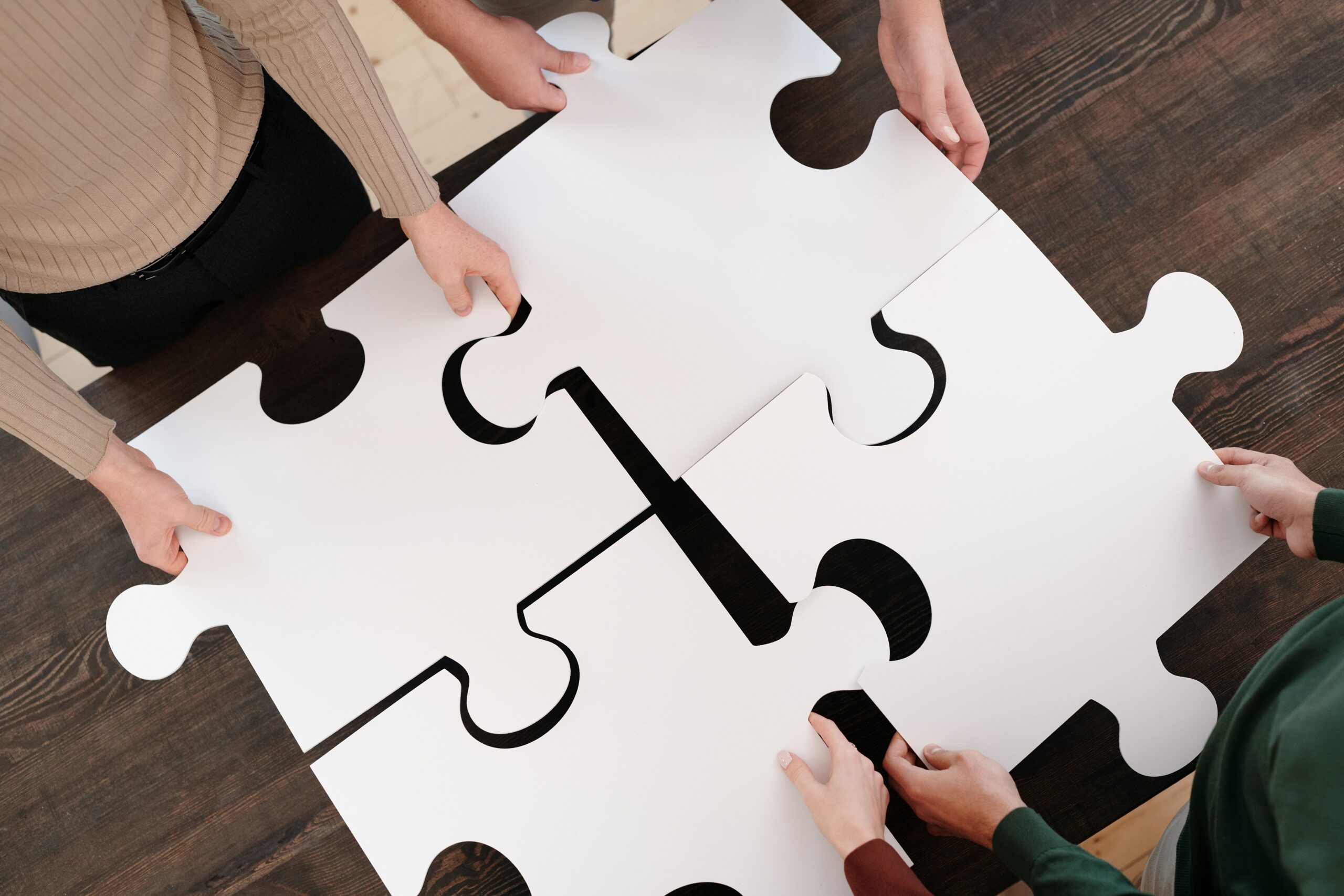By Lisa Taylor and Taryn Blanchard
In the first part of our Challenges @ work series, we pinpointed the human at the centre of the Future of Work, and the tendency to take up deterministic discussions or viewpoints that can see people left behind or lost in the noise. Technology has long been the subject of these types of discussions, and real estate is being taken up in a similar fashion as our office/home work models are upended by COVID-19.
Why is the Future of Work so often constrained to ‘in-the-box’ thinking and planning?
The rush to focus on technology or real estate stems from our desire to solve puzzles. This is a common approach taught in business school: in order to succeed in a venture, you first need to determine the puzzle picture that you will be completing. This means defining the problem (the edge pieces of the puzzle), identifying all the components (the inner puzzle pieces), and putting them together.
This approach works well in many cases. It provides a systematic approach that imposes order on our messy challenges and big dreams, and helps us find a way through all the chaos and uncertainty.
But in COVID times, this ‘putting the puzzle together’ approach is problematic. More broadly, it’s a problematic approach to take in the midst of any crisis. And it’s always a problematic approach to take when addressing the Future of Work.
The future is not a puzzle to solve. There is no picture on the box to use as a guide. The edges and inner puzzle pieces are not clearly defined, either. They don’t remain static, and we never even have all the pieces with which to start. So how do we change our thinking?
While business solves problems as puzzles, science approaches problems as mysteries. (I learned this from my friend Dr. Nasreen Khatri.) Science doesn’t create experiments in situations where the outcome is already known, such as the picture on the box or the edge pieces forming a neat outline or border. This would be a waste of resources.
Instead, science poses research questions, sets hypotheses, and tests them. This entails gathering information, looking for clues (patterns and trends in the data), validating the findings, and redefining the parameters of the experiment whenever necessary.
We are living this scientific method right now through public health updates, data collection and reporting, and all the associated processes that are put in place, modified, and reviewed on an ongoing basis. In the context of COVID-19, a high-stress situation that has widespread consequences for all of us, this can be frustrating. We want our health and government officials to provide a definitive set of rules, boundaries, and steps that we can all follow from beginning to end. And when they don’t do this to our satisfaction, our uncertainty rises and clarity seems more elusive than ever.
 But the shifts to our public health officials’ stances, findings, recommendations, and predictions don’t signal a failure on their part. They should not irrevocably damage our trust in them.
But the shifts to our public health officials’ stances, findings, recommendations, and predictions don’t signal a failure on their part. They should not irrevocably damage our trust in them.
These shifts aren’t occurring because they don’t know what they’re doing. Rather, it’s precisely because they are applying the scientific method that sees the problem as a mystery rather than a puzzle. They’re watching for clues to validate or invalidate their hypotheses, and then responding as the broader picture continues to morph and change.
This is how we need to approach the Future of Work, too.
We need to develop research questions and conduct experiments that can be tested. We need to be ready and willing to adjust our approach, to think grandly and learn from what we get right and wrong. We need to challenge ourselves whenever it starts to look like we’re putting up borders and boundaries around our visioning of the future.
And, always, we need to place humans (yourself, your colleagues, your clients, your communities, your society) at the centre of the mystery that is the Future of Work.
Read Part 1 and Part 3 of our Challenges @ work series.
Challenge Factory can help you shape your Future of Work. Here’s how.

